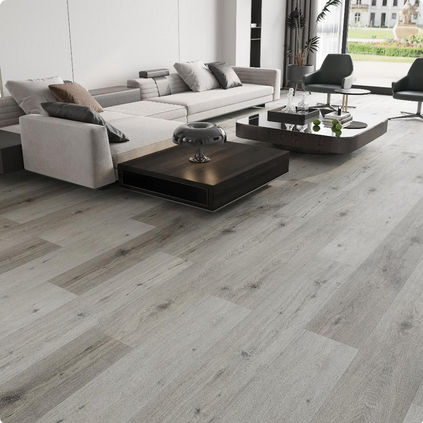
Author, Written by: P. Hirani (Wood flooring Expert)
Luxury Vinyl Tile (LVT) is a favourite for many UK homeowners renovating older properties. It offers the look of real wood or stone with durability, water resistance and easy upkeep. But one challenge in period and older homes is the subfloor condition. Decades of wear, past repairs, or uneven settling often mean the subfloor isn’t perfectly smooth, making LVT/Vinyl installation trickier. Here’s how to tackle laying LVT on irregular subfloors so you get a flawless finish.
1. Assessing the Subfloor Condition
Before you start, check whether the subfloor is concrete, floorboards, or an older vinyl/linoleum layer. Look for:
-
Visible dips or humps
-
Loose boards or cracked concrete
-
Signs of dampness or rot
-
Leftover adhesive from previous flooring
If the irregularities are minimal, you may be able to fix them with simple preparation. Severe unevenness may require more extensive work.
2. The Importance of a Level Base
LVT requires a smooth, level surface for two main reasons:
-
Visual appeal : Irregularities can cause the tiles or planks to sit unevenly, creating visible gaps.
-
Longevity : High spots can cause pressure points, while low spots may allow movement, leading to lifting or damage.
Most manufacturers recommend no more than a 3mm variation over a 2m span.
3. Preparation Options
a. For Minor Imperfections:
-
Self levelling compound: Ideal for small dips and an overall smooth finish. Works well over both concrete and plywood.
-
Sanding down high spots: Use a floor sander or planer to reduce raised areas.
b. For Significant Irregularities:
-
Overboarding: Installing plywood sheets over existing boards can provide a fresh, even surface.
-
Full screed application: For concrete floors, applying a thicker screed can level large sections.
-
Replacing damaged boards: Essential if old timber floors are warped or rotten.
4. Addressing Moisture Concerns
Older UK homes often suffer from damp subfloors, especially on ground levels. Before installing LVT:
-
Use a moisture meter to check levels.
-
Apply a damp proof membrane if readings are high.
-
Repair any leaks or ventilation issues before proceeding.
5. Choosing the Right Underlay
For click LVT/Vinyl, a quality underlay can help absorb minor imperfections and provide cushioning. In glue down installations, underlay isn’t typically used, so the subfloor needs to be perfectly smooth.
6. Laying the LVT
-
Always follow the manufacturer’s acclimatisation guidelines (usually 24–48 hours).
-
Work from the centre of the room for a balanced layout.
-
For glue down, use the recommended adhesive and roll the floor to secure contact.
-
For click fit, ensure each joint is locked tightly before moving on.
7. Final Checks
Once installed, inspect the floor in good lighting. Any visible unevenness will be more obvious now than later. Correct any issues immediately before furniture is placed.
Tip for Renovators:
In older homes, it is worth factoring subfloor repair into your renovation budget. It’s not the most exciting spend, but it ensures your beautiful new LVT floor looks perfect and lasts for years.
About Author:
Peter H. is a flooring product expert who knows all about different types of flooring materials. He shares his knowledge in blogs to help readers make the best choices for their spaces.
